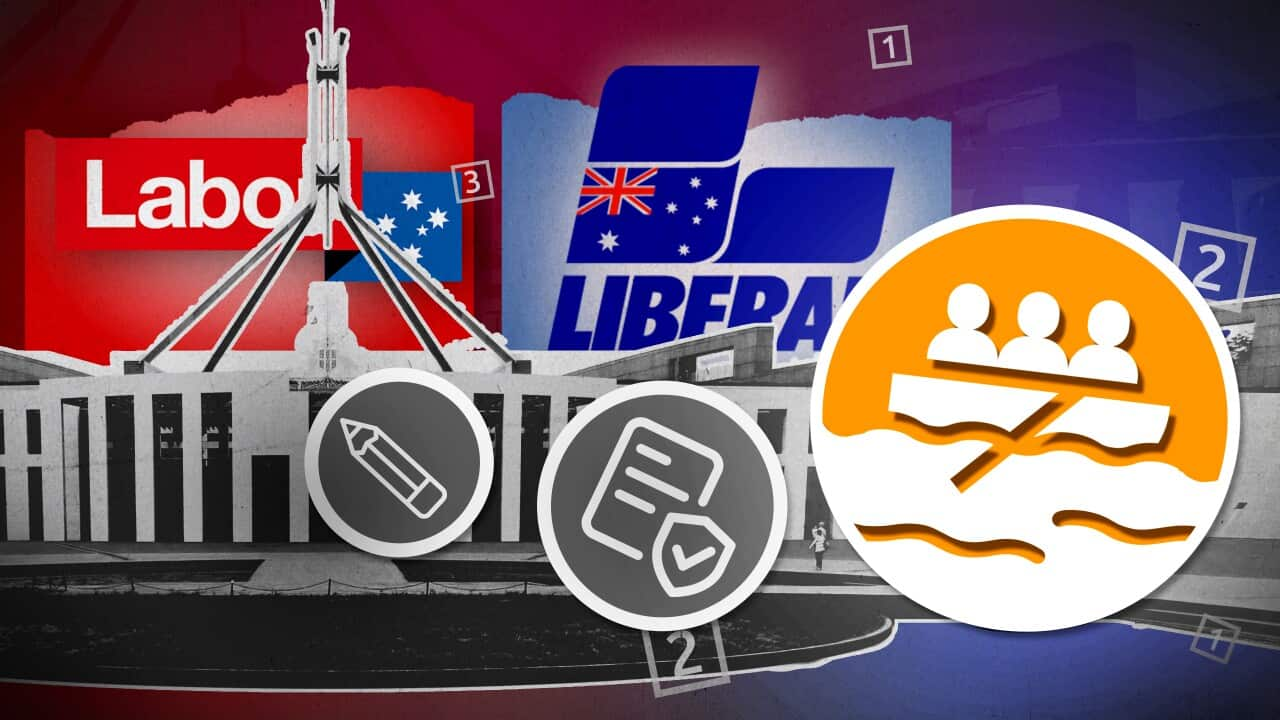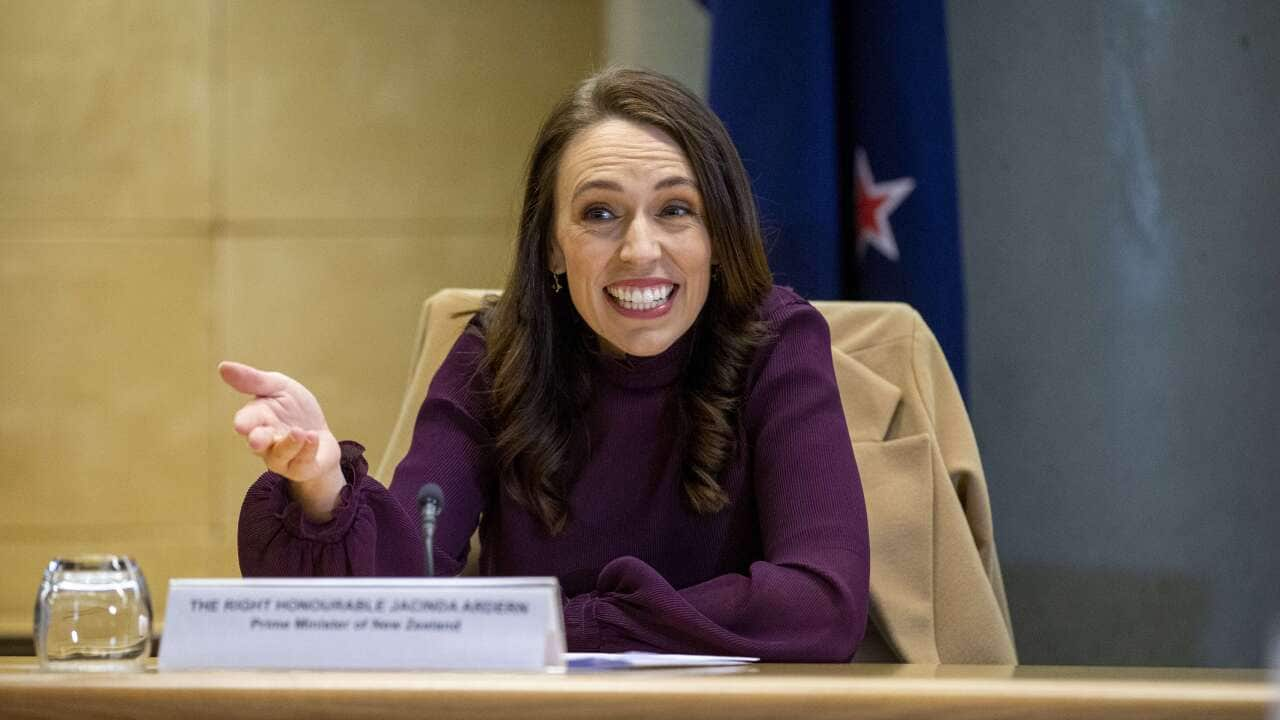Key Points
- Federal government acknowledges a huge backlog in visa processing
- Department of Home Affairs facing $875 million budget cut
Australia's migration program is still reeling from the COVID-19 pandemic, with the incoming Albanese government accepting "there's much to be done" in its rebuilding.
The push is a recognition of the immense pressure facing the Department of Home Affairs, which is responding to backlogs of visa applications, with subsequent longer waiting times for applicants.
However the department is also contending with demands from businesses anxious to fill skills shortages, desperate pleas from people from Afghanistan seeking protection, and a looming budget cut to the department, the task ahead appears immense.
Former deputy secretary of the immigration department Abul Rizvi’s assessment of the challenge ahead is blunt.
“We have a situation where the Home Affairs department and the visa system is in absolute gridlock,” he told SBS News.
“There is a lot to fix and it will take time.”
Immigration Minister Andrew Giles told SBS News: “In terms of the extraordinary delays we’ve seen in visa processing, this is a real priority for me and an Albanese Labor government.
“Whether it relates to humanitarian, family reunion, or skilled visas, we need to do much better.”
He’s sought advice on addressing the challenges faced by the department as a “matter of urgency”.
The department is facing an $875 million budget cut, based on the Morrison government’s March update.

Minister for Immigration Andrew Giles (left) says there are large delays in the processing of visas as the Home Affairs Department faces a range of challenges. Source: AAP / LUKAS COCH
The Department of Home Affairs maintains it's still coping with the "considerable impact" on the processing of visas as a result of the COVID-19 pandemic.
The pandemic period required many staff to focus on exemption assessments for the international border closure as well as grants for inward and outward travel.
"The department will work with the government to ensure the most timely processing of outstanding visas," a spokesperson said.
'Significant barriers'
The COVID-19 pandemic rocked Australia’s migration program with the number of people coming to the country plummeting for the first time since World War Two.
Despite the reopening of Australia’s borders helping this recover, the fallout continues to be felt with businesses complaining of widespread skill shortages.
Andrew McKellar, chief executive of the Australian Chamber of Commerce and Industry, said businesses are reporting “significant barriers” to attracting skilled workers.
“Widespread skill shortages continue to be the most pressing challenge facing business, constraining their ability to operate at full capacity,” he told SBS News.
He cited "protracted processing times, excessive costs, confusing compliance measures and compulsory labour market testing" as challenges for employers.
A spokesperson for the department said it "is undertaking priority assessments of visas to assist economic recovery."
'The demand is absolutely overwhelming'
For some in Afghanistan, the election of a new government has renewed hopes of a pathway to protection in Australia.
Former interpreters who served with Australian troops in the country are now hoping the new government will issue them visas.
The Morrison government committed to deliver 31,500 places to people from Afghanistan over the next four years, focused on those with links to Australia.
The commitment was in response to fears of persecution tied to the Taliban’s rise to power last August.
Refugee Council of Australia CEO Paul Power said demand is exceeding capacity with more than 170,000 people seeking Australia's protection.
“The demand is absolutely overwhelming - there are so many people in great need inside the country, in neighbouring countries,” he said.
'Refugee resettlement places are in desperately short supply'
Mr Power said another challenge for the Labor government to address was long-held concerns for people in limbo in Australia’s offshore processing system.
In March, the Morrison government finalised a deal to send 450 refugees to New Zealand and approximately 250 places remain on the United States resettlement pathway.
But Mr Power said that would still leave around 500 people left behind in Australia’s offshore processing system without a resettlement option.
“The reality is refugee resettlement places are in desperately short supply at the moment,” he said.
He added another concern was that there are another 30,000 applications for onshore humanitarian protection claims yet to be processed.
There are also some before the Administrative Appeals Tribunal (AAT), according to the tribunal's latest annual report.
Bridging visa numbers up to 367,000
Pressure on the resources of the Department of Home Affairs has also resulted in about 367,000 people living in Australia on bridging visas.
That's up from 180,000 in June 2019, according to government data.
The Department of Home Affairs said the reason for that is there's a large number of people unable to depart Australia due to COVID-19 travel restrictions.
Mr Rizvi said the backlog needed to be addressed.
"The overall bridging visa situation just reflects how gummed up the visa situation is,” he said.
“Something’s got to be done to clear that - but the backlog is made up of people applying for different visa types so there isn’t that single measure that will fix it.”
International students face 18-month wait for visas
There have also been complaints from international students about facing continued delays in the outcomes of their applications to study in Australia.
The concerns coming on top of the challenges caused by two years of uncertainty because of the COVID-19 pandemic.
Oscar Zhi Shao Ong, national president of the Council International Students Australia, said some students were facing “significant” waiting times in visa processing.
“We have been hearing more and more students have been waiting for a long period of time for their visa,” he said.
There are just over 52,000 student visa applications on hand from offshore applicants and around 76,400 from onshore applications, as of April, according to official figures.
About 76 per cent of applications on hand offshore are less than two months old with around 2 per cent of the total on hand applications are greater than 18 months old.
Universities Australia has backed calls to help improve the processing of visas.
“Anything we can do to ensure the visa process is straightforward, efficient and robust is essential to providing certainty and assurance to students abroad,” a spokesperson said.
The department says it has granted over 1,301,000 visas since the border first reopened to vaccinated travellers in November 2021.
















